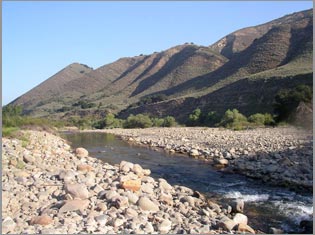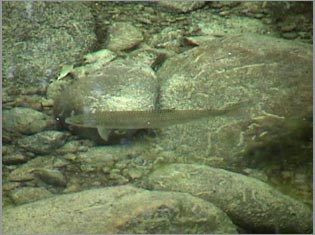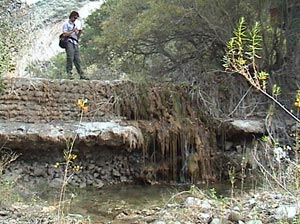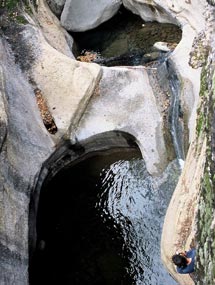
Sisquoc River Steelhead Assessment and Recovery Project
Northern Santa Barbara and Southern San Luis Obispo Counties, CA
Reports:
Part 1: Steelhead Migration Barrier Assessment & Recovery Opportunities for the Sisquoc River ![]() 47mg
47mg
Part 2: California 2003, Steelhead Migration Barrier Assessment and Recovery Opportunities for the Sisquoc River, California 2003 ![]() 42mg
42mg
Sisquoc Map 1 ![]() 9mg
9mg
Sisquoc Map 2 ![]() 7mg
7mg
Sisquoc Map 3 ![]() 9mg
9mg
With funding from the California Coastal Conservancy, Stoecker Ecological managed this project, conducted all field work, and authored the final report. The objective of the project was to identify and assess steelhead migration barriers on the Sisquoc River, and significant tributaries, and to provide that data to the California State Coastal Conservancy in a form consistent with the Pacific States Marine Fisheries Commission Fish Passage Database. In addition, migration barrier restoration actions were prioritized and general habitat and steelhead population information collected.
Historically, the majority of the Santa Maria River steelhead population was believed to migrate up the Sisquoc River to spawn and rear (Shapovalov, 1945). Since no major dams occur for the entire length of the Santa Maria and Sisquoc River the watershed has the potential to support a large run of steelhead with properly managed water releases from Twitchell Dam. The majority of the Sisquoc River watershed remains in a relatively natural state and is protected within the San Rafael Wilderness, Sisquoc Wild and Scenic River Corridor, and other public lands of the Los Padres National Forest. Improving steelhead migration flows on the mainstem of the Santa Maria River below Twitchell Dam, in order to provide access to spawning and rearing habitat upstream in the Sisquoc River, is the highest priority and an essential first step for steelhead recovery in the watershed.
|






